Infrared vs Traditional Sauna: Which Type of Sauna is Right for Your Wellness Routine?
In the pursuit of wellness and relaxation, saunas have emerged as a popular and enduring practice across cultures and generations. With the rise of infrared technology, a new type of sauna experience has entered the scene, prompting many to consider the differences and benefits of infrared vs traditional saunas. As you start on your own wellness journey, understanding the key aspects of each sauna type and what does a sauna do for you can help you make an informed decision about which one best aligns with your health goals and preferences.
This comprehensive guide explores infrared and traditional saunas, their origins, functioning mechanisms, and the unique ways in which they promote physical and mental well-being. By examining heating methods, temperature ranges, humidity levels, and the overall sauna experience, we aim to provide you with the knowledge necessary to choose the sauna that best fits your lifestyle and wellness routine.
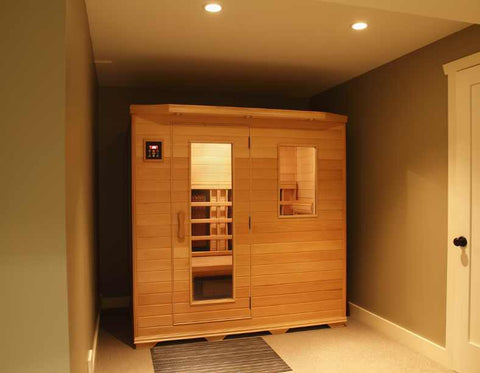
Understanding Saunas
Saunas have long been a cornerstone of wellness and relaxation practices around the world. Rooted in ancient traditions, they serve not only as a means of cleansing the body but also for promoting mental tranquility and social interaction. To fully appreciate the nuances between infrared and traditional saunas, it's essential to delve into what defines each type, its origins, and how they operate to enhance wellness.
What is a Traditional Sauna?
A traditional sauna, often referred to as a Finnish sauna, operates by heating the air inside a room, typically using a wood-fired, electric, or gas heater. Sauna stones are heated within the sauna, and water can be poured over these rocks to generate steam, creating a humid environment known as a steam sauna. Conversely, when no water is added, it remains a dry sauna. The temperatures in these saunas can soar between 150°F to 195°F (65°C to 90°C), with humidity levels ranging from 10% to 60%, providing an intense heat that promotes sweating and deep relaxation.
The tradition of the sauna is deeply embedded in Finnish culture, dating back thousands of years. It was originally used as a place for physical and spiritual cleansing, and its significance extends beyond mere bathing to become a vital part of social and family life in Finland and other parts of the world.
What is an Infrared Sauna?
Infrared saunas, a modern iteration of the traditional sauna, utilize infrared heaters to emit infrared light experienced as radiant heat, which is absorbed directly by the skin's surface. Unlike traditional saunas that heat the air, infrared saunas directly warm the body, allowing for lower ambient temperatures ranging from 120°F to 150°F (49°C to 65°C). This direct form of heat penetration allows for a more gentle sauna experience, potentially making it more accessible to those who might find the high temperatures of traditional saunas uncomfortable.
The concept of infrared heat therapy has been used in various therapeutic practices for decades, but its application in sauna design is a relatively recent innovation. The appeal of infrared saunas lies in their ability to provide a deep, penetrating heat that proponents claim can offer unique health benefits such as improved circulation, muscle relaxation, and detoxification at lower, more tolerable temperatures.
Key Differences Between Infrared and Traditional Saunas

While both infrared and traditional saunas offer pathways to relaxation and wellness, their operational methods, average sauna temperatures, and the experiences they provide differ significantly. These distinctions not only affect the user's comfort and preference but can also play an important role in the specific health benefits one might seek from a sauna experience.
Heating Mechanism
-
Traditional Saunas: These hot saunas use a heater to warm the air inside the room, which in turn heats the occupants. The heat sources can vary from wood-fired stoves to electric and gas heaters. Traditional saunas may also include a pile of rocks that absorb and retain heat, allowing users to control humidity levels by pouring water over the hot stones, creating steam.
-
Infrared Saunas: Instead of heating the air around the user, infrared saunas use infrared panels to emit infrared light, which is absorbed directly by the skin. This technology heats the body from within, as opposed to heating the ambient air, leading to a different type of sweat and experience.
Temperature Range
-
Traditional Saunas: They operate at much higher temperatures, typically between 150°F to 195°F (65°C to 90°C). The high heat and the option to add steam can intensify the sensation of warmth and promote more vigorous sweating.
-
Infrared Saunas: These are characterized by their lower operating temperatures, usually ranging from 120°F to 150°F (49°C to 65°C), making the heat more tolerable for individuals sensitive to high temperatures or those with certain medical conditions.
Humidity Levels
-
Traditional Saunas: The humidity level in a traditional sauna can vary significantly, from dry to very humid, depending on whether water is poured over the heated rocks. This variability allows for a range of experiences within the same sauna session.
-
Infrared Saunas: Typically operate with lower humidity levels, as they do not involve heating water or creating steam. The dry heat is absorbed directly by the body, providing a different kind of therapeutic warmth.
Time to Heat Up
-
Traditional Saunas: They require a longer time to reach the desired temperature due to the need to heat the entire room, including the air and the stones. This process can take anywhere from 30 minutes to an hour, depending on the size of the sauna and the heat source.
-
Infrared Saunas: These can reach their optimal operating temperature more quickly, often within 10 to 20 minutes, as they directly heat the body without the need to warm up the surrounding air. This efficiency can make infrared saunas more convenient for those with tighter schedules.
RELATED TO: Can Infrared Saunas Cause Cancer? Here's What Science Says
How to Use Infrared and Traditional Sauna in Your Wellness Routine
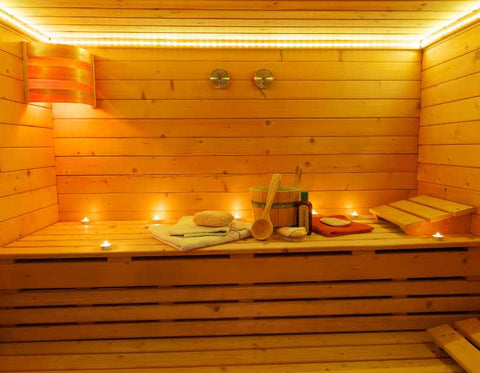
Sauna bathing can provide numerous potential health benefits, including relaxation, detoxification, and improved cardiovascular health. However, the choice between an infrared and traditional sauna can impact how you integrate this practice into your life.
Understanding how to use a sauna correctly can significantly enhance your wellness routine, whether you opt for an infrared or traditional sauna. Here's how to use each type of sauna effectively within your wellness routine, highlighting the unique traditional and infrared sauna benefits and considerations.
Traditional Sauna: Embracing Heat and Steam
Frequency and Duration: For beginners, start with 5 to 10 minutes per session, 2-3 times a week, gradually increasing to 15-20 minutes as you become more accustomed to the heat. Experienced users often enjoy sessions up to 20-30 minutes. How long should you sit in a sauna depends on tolerance and comfort level.
Hydration: The high temperatures and potential for heavy sweating in traditional saunas necessitate proper hydration. Drink at least one glass of water before entering the sauna and more after your session to replenish lost fluids.
Post-Sauna Cool Down: After a traditional sauna session, allow your body to cool down gradually. This can be achieved through a lukewarm shower or by resting in a cooler environment. This step is imperative to improve cardiovascular health and prevent dizziness.
Integrating with Exercise: Traditional saunas can be potentially used as post-workout to aid in muscle recovery and relaxation. The heat helps to soothe sore muscles and improve circulation.
Potential Benefits of Traditional Saunas
-
Detoxification through Sweating: The intense heat of traditional saunas promotes profuse sweating, aiding in the elimination of toxins from the body.
-
Cardiovascular Health Improvements: The high temperatures in traditional saunas can increase heart rate, similar to moderate exercise, which can help improve cardiovascular health. The heat also enhances blood circulation, ensuring that oxygen and nutrients are more efficiently distributed throughout the body, supporting overall health and vitality.
-
Stress Relief and Relaxation Benefits: The warmth of the sauna relaxes muscles, eases pain in joints and muscles, and has a calming effect on the mind, contributing to stress reduction.
Infrared Sauna: Gentle Heat for Deep Relaxation
Frequency and Duration: Infrared sauna sessions can typically last a bit longer due to the lower temperatures, starting from 20-30 minutes for beginners and potentially extending up to 45 minutes for those accustomed to the heat. Starting with 2-3 sessions a week can be beneficial, with adjustments based on personal response and comfort.
Hydration: Similar to traditional saunas, hydration is key. Ensure you are well-hydrated before and rehydrate after your infrared sauna use to maintain optimal health and avoid dehydration.
Cool Down: While the lower temperatures of infrared saunas might make a cool-down period feel less necessary, it's still important to give your body time to adjust back to its normal temperature. A gentle shower and some rest can aid in this transition.
Incorporating into a Relaxation Routine: Due to the gentler nature of infrared saunas, they can be a perfect addition to a relaxation or meditation routine. The soothing heat without the intense humidity can provide a calming environment conducive to mental and emotional relaxation.
Potential Benefits of Infrared Saunas
Here are the potential benefits of infrared saunas.
-
Deep Tissue Relief and Muscle Relaxation: The infrared heat penetrates deeper into the skin and muscles compared to the surface-level warmth of traditional saunas. This deep penetration is effective in soothing muscle tension and relieving joint pain, making it ideal for post-exercise recovery or for those with chronic muscle pain.
-
Enhanced Detoxification at Lower Temperatures: Infrared saunas operate at lower temperatures than traditional saunas, yet they can induce a sweat composed of more toxins due to deep tissue heating. This allows for a more comfortable experience that still effectively aids in the elimination of heavy metals and other toxins from the body.
-
Potential for Weight Loss and Improved Circulation: While sitting in a sauna should not replace regular exercise, the increased heart rate induced by infrared heat can contribute to calorie burn and weight loss over time. Additionally, the deep heat improves blood circulation, similar to the effects of mild exercise, which can support heart health and boost metabolic processes.
-
Customizable Sessions for Enhanced Wellness: Many infrared saunas offer customizable settings, allowing users to adjust the intensity and wavelength of the infrared light. This personalization can cater to specific health goals, such as improving skin health, enhancing relaxation, or targeting muscle recovery, making each session a tailored wellness experience.
Considerations for Both Sauna Types
Listen to Your Body: Regardless of the sauna type, it's important to pay attention to your body's signals. If you feel dizzy, overly tired, or uncomfortable, it's time to leave the sauna.
Avoid Overuse: While saunas can be beneficial, overuse can lead to dehydration and other health issues. It's essential to balance sauna sessions with other wellness practices.
Consult with a Healthcare Provider: If you have pre-existing health conditions or concerns, consulting with a healthcare provider before incorporating sauna sessions into your wellness routine is wise.
Making the Choice: Considerations for Your Wellness Routine

Deciding between an infrared and traditional sauna for your wellness routine involves weighing various factors, from health and safety considerations to practical aspects like space and budget. Here’s how to navigate these considerations to make an informed choice that aligns with your wellness goals and lifestyle.
Personal Health and Safety
Medical Conditions: Individuals with certain health conditions, especially cardiovascular issues, low blood pressure, or skin conditions, should consult a healthcare provider before using any sauna. Infrared saunas might be more suitable for those sensitive to high heat due to their lower operating temperatures.
Pregnancy: Pregnant individuals should generally avoid sauna use, especially during the first trimester. If considering sauna use later in pregnancy, an infrared sauna might be less intense, but it's essential to consult with a healthcare professional.
Age Considerations: Older adults and young children should exercise caution with saunas. Lower temperature infrared saunas might be more appropriate for older adults, while very young children should avoid sauna use due to the risk of overheating.
Space and Installation Requirements
Home Installation: Traditional saunas might require more space and significant modifications to your home, including proper ventilation and heat-proofing. Infrared saunas are often more compact and easier to install, making them suitable for smaller spaces or apartments. Many infrared sauna companies offer a range of models designed for easy installation in various home settings, ensuring there's likely an option that fits your space and aesthetic preferences.
Ventilation: Proper ventilation is imperative to ensure safety and comfort, especially for traditional saunas, which can produce a lot of steam and require an outlet for humid air.
Electrical Requirements: Ensure your home can support the electrical requirements of the sauna you choose. Infrared saunas typically require less power compared to traditional saunas, which might necessitate a dedicated circuit for your sauna at home.
Budget and Cost
Initial Investment: The home sauna cost and installation can vary widely. In general, infrared saunas tend to be less expensive and easier to install, which might make them a more budget-friendly option.
Operating Costs: Consider the long-term operating costs, including energy consumption and maintenance. Infrared saunas usually cost less to operate due to their efficient heating mechanism and shorter warm-up times.
Personal Preference and Comfort
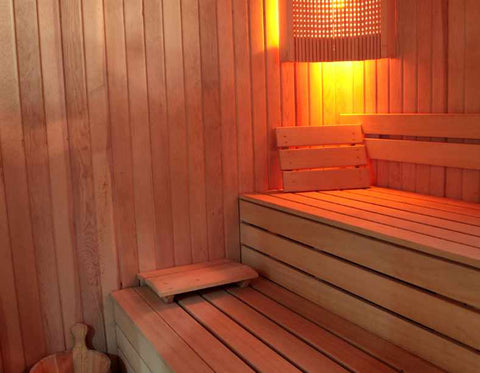
Heat and Humidity Preference: Your personal comfort with high temperatures and humidity levels should play a significant role in your decision. If you prefer a dry heat or have a low tolerance for high temperatures, an infrared sauna might be more comfortable.
Experience and Ambiance: Some individuals prefer the traditional sauna experience, including the ritual of pouring water over hot stones. If the cultural and traditional aspects of sauna use are important to you, a traditional sauna might be more appealing.
Health Goals: Consider what you want to achieve with your sauna use. If deep tissue relaxation and gentle detoxification are your priorities, an infrared sauna might be more beneficial. For intense sweating and a more vigorous experience, a traditional sauna could be preferable.
Making an informed choice between an infrared and traditional sauna involves considering these factors in the context of your unique health profile, lifestyle, and wellness goals. By evaluating your needs and preferences, you can select the sauna type that will best complement and enhance your overall wellness routine.
FAQs: Infrared vs Traditional Sauna
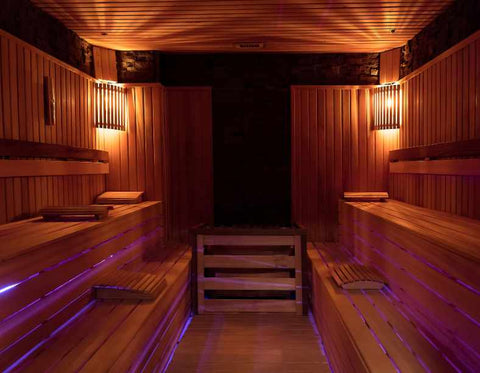
What are the main health benefits of using a traditional sauna?
Traditional saunas are known for their ability to induce deep sweating, which helps detoxify the body, relax muscles, soothe aches in muscles and joints, and improve circulation. The high-heat environment can also elevate heart rate, similar to moderate exercise, potentially leading to improved cardiovascular health.
How does an infrared sauna work differently from a traditional sauna?
Infrared saunas use infrared light to heat the body directly instead of heating the air around you. This direct application of heat allows for penetration into the muscles and tissues, providing a more gentle warming experience, often preferred by those who might find traditional sauna temperatures uncomfortable.
Can infrared saunas help with weight loss?
While infrared saunas can increase heart rate and metabolic rate in a way similar to mild exercise, the weight loss primarily associated with sauna use is due to loss of water weight through sweating. Consistent use, as part of a healthy lifestyle, might contribute to weight loss over time but should not be relied upon as the sole method for weight reduction.
Are there any risks associated with using saunas?
Both traditional and infrared saunas are generally safe for healthy individuals when used appropriately. However, risks can include dehydration, overheating, and heat exhaustion, especially if one stays in a sauna too long or does not hydrate properly. People with certain health conditions, such as heart problems, low blood pressure, or pregnant women, should consult a doctor before sauna use.
How often should I use a sauna for optimal health benefits?
The frequency can vary based on personal health, tolerance, and lifestyle. Many find that 2-4 sessions per week, lasting between 15 to 30 minutes each, offer substantial benefits without the risk of dehydration or other adverse effects. Listening to your body and adjusting based on how you feel after each session is important.
Can children use saunas?
Children have a less developed ability to regulate body temperature compared to adults, making sauna use riskier. If children use a sauna, it should be at a lower temperature for a shorter duration under close adult supervision, and with a doctor's approval. Infrared saunas might be more suitable due to their lower operating temperatures.
Is it okay to pour water on the rocks in an infrared sauna to increase humidity?
No, infrared saunas are designed to work without the addition of humidity, and pouring water on the heating elements can damage the sauna and may pose a risk of electrical shock. The infrared panels are designed to directly heat the body and do not require water for effective use.
How should I prepare for a sauna session?
Regardless of the sauna type, it's important to be well-hydrated before entering. Avoid alcohol and eat a light meal a few hours before your session. It's also advisable to take a warm shower beforehand to start the relaxation process and remove any lotions or perfumes that could clog pores.
Can sauna use improve skin health?
Yes, both traditional and infrared saunas can help improve skin health by promoting deep sweating, which helps flush out toxins and impurities from the skin. The increased circulation can also bring more nutrients to the skin, potentially improving its appearance and elasticity.
Do I need a cool-down period after using a sauna?
Yes, a cool-down period after sauna use is important to allow your body temperature to return to normal gradually. This can be achieved by sitting in a cooler area, taking a lukewarm shower, or simply resting for 10-20 minutes before resuming your day.
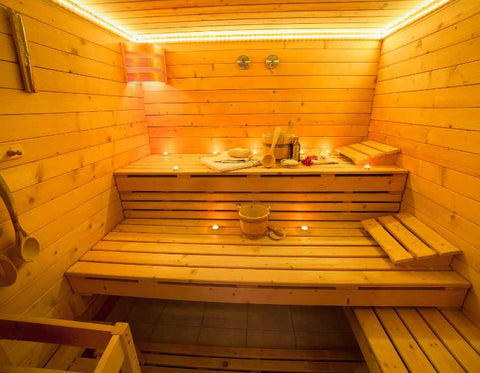
In Summary
Choosing between an infrared and traditional sauna involves considering various factors that align with your personal health goals, preferences, and lifestyle. Both types offer significant wellness benefits, including relaxation, detoxification, improved circulation, and muscle relief. Traditional saunas provide an intense heat experience that promotes deep sweating, while infrared saunas offer a gentler approach, directly warming the body and allowing for deeper tissue penetration at lower temperatures.
When integrating a sauna into your wellness routine, it's imperative to consider personal health and safety, space and installation requirements, budget, and your specific health and relaxation goals. Listening to your body and adjusting your sauna sessions accordingly is key to maximizing the benefits while minimizing any risks.
Whether you choose an infrared or traditional sauna, the goal is to enhance your overall well-being. By making an informed decision based on your unique needs and preferences, you can enjoy the numerous health and relaxation benefits that sauna use has to offer.

